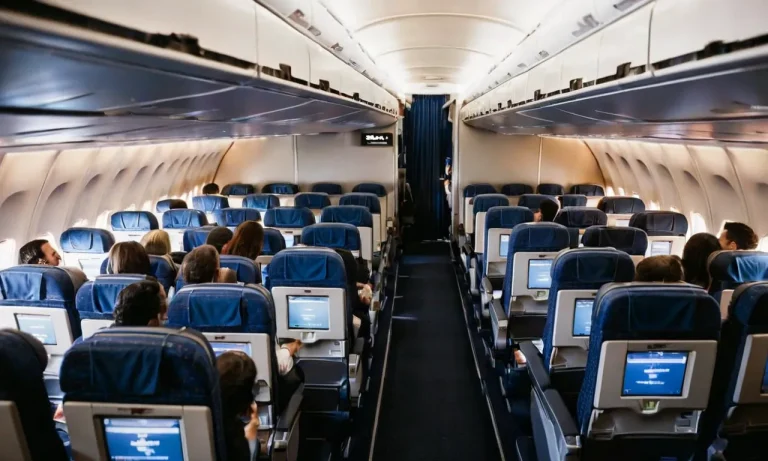Can A Helicopter Fly From The Usa To Europe?
With recent advancements in helicopter technology and range, more people are curious whether a helicopter could make the transatlantic flight from the USA to Europe. If you’re short on time, here’s a quick answer: while helicopters have come a long way in terms of range and capability, the journey from the USA to Europe is still too far for current helicopter models to complete without refueling.
In this comprehensive guide, we’ll explore the key factors that determine whether a helicopter can fly across the Atlantic Ocean, the challenges involved, the current helicopter models with the greatest range, and what future advancements could make this flight possible.
What Determines a Helicopter’s Range
When considering whether a helicopter can fly from the USA to Europe, several factors come into play. The range of a helicopter is influenced by various elements including engine power and fuel capacity, aerodynamics and efficiency, as well as weight and balance.
Engine power and fuel capacity
The engine power and fuel capacity of a helicopter greatly impact its range. Helicopters with more powerful engines and larger fuel tanks can cover longer distances before needing to refuel. The power output of a helicopter’s engine is measured in horsepower, and a higher horsepower typically means a greater range.
Additionally, helicopters designed for long-range flights often have larger fuel tanks to accommodate the extra fuel needed for extended trips.
Aerodynamics and efficiency
The aerodynamics and efficiency of a helicopter play a crucial role in determining its range. Helicopter manufacturers constantly strive to improve the aerodynamic design of their aircraft to reduce drag and increase fuel efficiency.
Factors such as rotor blade design, fuselage shape, and the use of lightweight materials all contribute to improving a helicopter’s range. By minimizing drag and optimizing efficiency, helicopters can cover greater distances with the same amount of fuel.
Weight and balance
Weight and balance also play a significant role in determining a helicopter’s range. Helicopters have specific weight limitations that must be adhered to in order to maintain safe flight conditions. Exceeding these weight limits can negatively impact the helicopter’s performance and range.
Additionally, the distribution of weight within the helicopter, known as balance, must be carefully managed to ensure stability during flight. Proper weight distribution and balance help optimize a helicopter’s range and overall performance.
It’s important to note that while advancements in technology have allowed helicopters to achieve impressive ranges, flying from the USA to Europe in a helicopter is currently not a practical or common method of transportation.
The range limitations, limited fuel capacity, and the need for multiple refueling stops make it an impractical choice for such long-distance travel. However, helicopters excel in various other roles such as search and rescue operations, aerial photography, and short-distance transport.
For more information on helicopter capabilities and range, you can visit www.faa.gov or www.nasa.gov.
The Challenges of Transatlantic Helicopter Flight
Immense distance
One of the main challenges of attempting a transatlantic helicopter flight is the immense distance that needs to be covered. The distance between the USA and Europe is approximately 3,800 miles (6,100 kilometers) at its shortest point.
This means that the helicopter would need to have a significant fuel capacity and endurance to make the journey.
Lack of places to refuel
Another challenge is the lack of places to refuel along the way. Unlike airplanes, helicopters cannot easily land on water or remote areas for refueling. They require designated helipads or airports with proper infrastructure.
Unfortunately, there are very few options for refueling during a transatlantic helicopter flight. This makes it crucial to carefully plan the route and ensure that there are enough refueling points available.
Weather and environmental factors
Weather and environmental factors also pose significant challenges to transatlantic helicopter flights. The conditions over the Atlantic Ocean can be unpredictable and harsh, with strong winds, turbulent weather, and low visibility.
Helicopters are more susceptible to adverse weather conditions compared to airplanes, making it even more challenging to ensure a safe and successful journey.
Additionally, the long duration of the flight increases the chances of encountering various weather patterns along the way. Pilots need to closely monitor weather forecasts and make informed decisions to navigate through areas with favorable conditions.
It is important to note that while transatlantic helicopter flights are technically possible, they are extremely rare and require extensive planning, specialized equipment, and experienced pilots. As of now, there have been no documented cases of a helicopter successfully completing a transatlantic flight.
Current Helicopter Models with the Greatest Range
When it comes to helicopters with long-range capabilities, there are a few models that stand out. These helicopters are able to cover significant distances without the need for refueling, making them potential candidates for transatlantic flights.
Let’s take a closer look at some of these impressive machines:
Sikorsky S-64 Skycrane
The Sikorsky S-64 Skycrane is a heavy-lift helicopter known for its exceptional range. With a maximum fuel capacity of around 1,000 gallons, it can fly for up to 800 miles without refueling. This makes it a popular choice for missions requiring transportation of heavy cargo or firefighting operations in remote areas.
The Skycrane’s ability to cover long distances efficiently is due to its powerful twin-engine configuration and advanced fuel management system.
Mil Mi-26
The Mil Mi-26, also known as the “Halo,” is the largest and most powerful helicopter in the world. It has an impressive range of up to 1,200 miles, making it a top contender for long-distance flights. With a maximum payload capacity of 20 tons, this helicopter is often used for transporting heavy equipment, humanitarian aid, and even military operations.
Its advanced avionics and fuel-efficient engines contribute to its exceptional range capabilities.
AgustaWestland AW101
The AgustaWestland AW101, originally designed for military purposes, is another helicopter with an impressive range. With a maximum range of around 1,000 miles, it has the capability to cover significant distances without the need for refueling.
The AW101 is often used for various missions, including search and rescue operations, offshore transportation, and VIP transport. Its state-of-the-art technology and fuel-efficient engines contribute to its long-range capabilities.
These helicopters are just a few examples of the current models with the greatest range. They are designed to meet the demands of various industries and have proven their efficiency in covering long distances.
However, it’s important to note that transatlantic flights still pose significant challenges for helicopters due to their limited speed and endurance compared to fixed-wing aircraft. While advancements in technology continue to push the boundaries of helicopter capabilities, a transatlantic flight from the USA to Europe remains a formidable task for these rotorcraft.
Future Possibilities and Concept Helicopters
When it comes to the question of whether a helicopter can fly from the USA to Europe, there are several factors to consider. While traditional helicopters may not have the range or fuel efficiency to make such a journey, advancements in technology have paved the way for future possibilities.
Concept helicopters, with their innovative designs and features, offer a glimmer of hope for long-distance flights.
Advancements in range and efficiency
One of the key challenges for helicopters in long-distance flights is their limited range and fuel efficiency. However, ongoing research and development efforts have focused on improving these aspects.
Engineers are working on developing lightweight materials, more efficient engines, and advanced aerodynamics to increase the range of helicopters. For example, the introduction of composite materials has significantly reduced the weight of helicopter structures, allowing for improved fuel efficiency and longer flights.
Moreover, electric and hybrid propulsion systems are being explored to further enhance the efficiency of helicopters. These systems have the potential to reduce fuel consumption and emissions, making long-distance flights more feasible.
Although these technologies are still in the early stages of development, they hold great promise for the future of helicopter travel.
In-flight refueling capabilities
Another possibility for helicopters flying long distances is the implementation of in-flight refueling capabilities. This concept, which is already utilized by military helicopters, involves aerial refueling to extend the range of helicopters.
By connecting with tanker aircraft mid-flight, helicopters can receive additional fuel, enabling them to continue their journey without the need for frequent stops.
While in-flight refueling is a complex and challenging process, advancements in automated systems and aerial refueling techniques continue to make it more feasible for civilian helicopters. If implemented successfully, this technology could open up new possibilities for long-distance helicopter travel, including flights between the USA and Europe.
Tiltrotor and compound helicopter designs
One of the most exciting developments in the world of helicopters is the emergence of tiltrotor and compound helicopter designs. These innovative concepts combine the vertical takeoff and landing capabilities of helicopters with the speed and efficiency of fixed-wing aircraft.
Tiltrotor helicopters, such as the Bell Boeing V-22 Osprey, have the ability to take off and land like a helicopter and then transition into a forward flight mode, where they can achieve higher speeds. This design allows for greater range and efficiency, making long-distance flights more feasible.
Compound helicopters, on the other hand, incorporate additional propulsion systems, such as wings or thrusters, to supplement the lifting capabilities of the rotor. This design reduces the reliance on the rotor for forward flight, resulting in improved fuel efficiency and range.
While these concept helicopters are still in the experimental stage, they hold immense potential for the future of aviation. If successfully developed and commercialized, they could revolutionize long-distance helicopter travel and make the idea of flying from the USA to Europe a reality.
Conclusion
While no currently flying helicopter can make the trip from the USA to Europe without refueling, advancements in technology like increased fuel efficiency, improved aerodynamics, in-flight refueling, and innovative new designs may one day make this feat possible.
But such a flight brings immense challenges that designers will need to plan for.
With the rapid rate of innovation in the aviation industry, we can expect to see continued expansion of helicopter ranges and capabilities in the coming years and decades.








